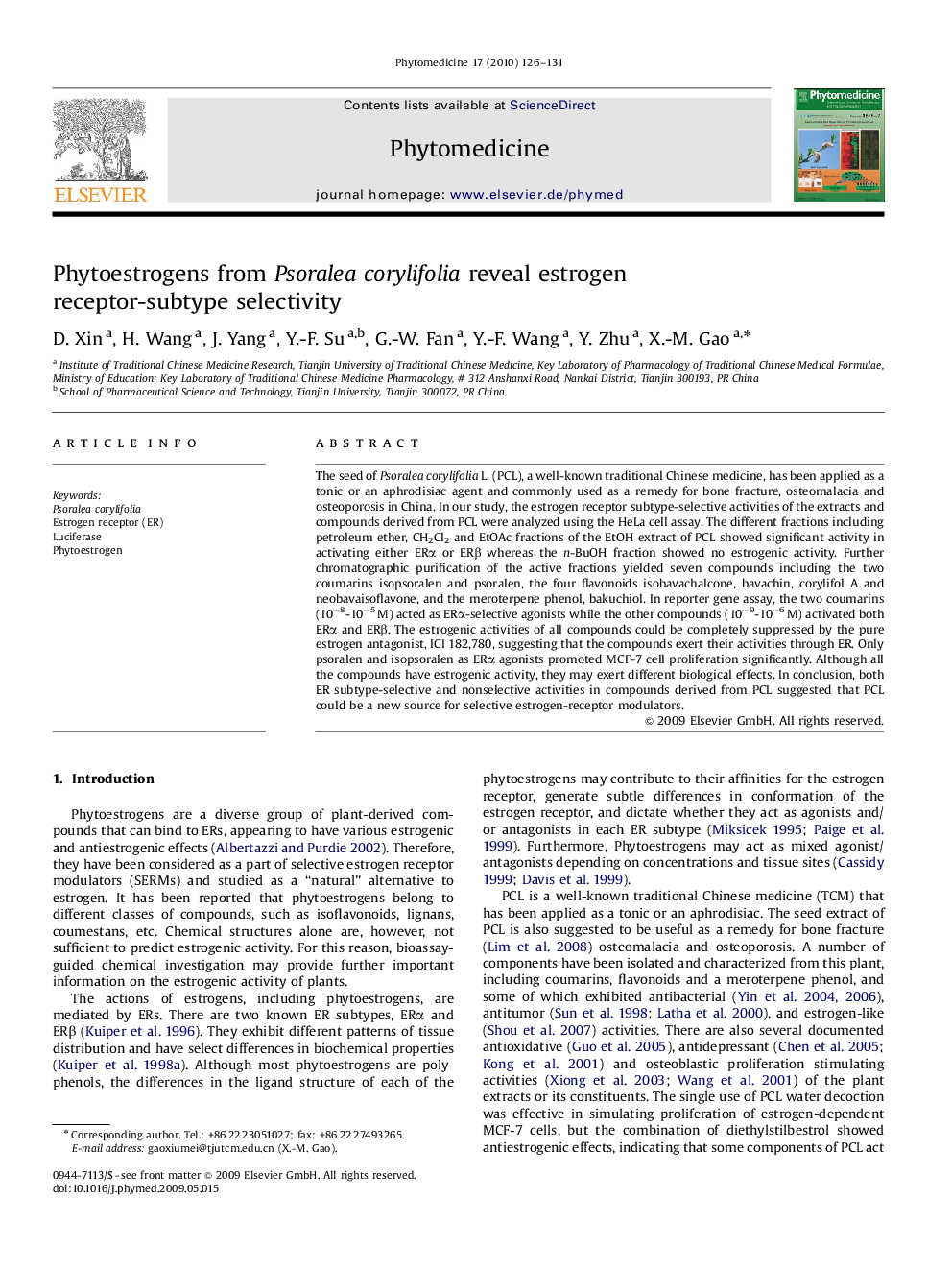| کد مقاله | کد نشریه | سال انتشار | مقاله انگلیسی | نسخه تمام متن |
|---|---|---|---|---|
| 2497703 | 1116217 | 2010 | 6 صفحه PDF | دانلود رایگان |

The seed of Psoralea corylifolia L. (PCL), a well-known traditional Chinese medicine, has been applied as a tonic or an aphrodisiac agent and commonly used as a remedy for bone fracture, osteomalacia and osteoporosis in China. In our study, the estrogen receptor subtype-selective activities of the extracts and compounds derived from PCL were analyzed using the HeLa cell assay. The different fractions including petroleum ether, CH2Cl2 and EtOAc fractions of the EtOH extract of PCL showed significant activity in activating either ERα or ERβ whereas the n-BuOH fraction showed no estrogenic activity. Further chromatographic purification of the active fractions yielded seven compounds including the two coumarins isopsoralen and psoralen, the four flavonoids isobavachalcone, bavachin, corylifol A and neobavaisoflavone, and the meroterpene phenol, bakuchiol. In reporter gene assay, the two coumarins (10−8-10−5 M) acted as ERα-selective agonists while the other compounds (10−9-10−6 M) activated both ERα and ERβ. The estrogenic activities of all compounds could be completely suppressed by the pure estrogen antagonist, ICI 182,780, suggesting that the compounds exert their activities through ER. Only psoralen and isopsoralen as ERα agonists promoted MCF-7 cell proliferation significantly. Although all the compounds have estrogenic activity, they may exert different biological effects. In conclusion, both ER subtype-selective and nonselective activities in compounds derived from PCL suggested that PCL could be a new source for selective estrogen-receptor modulators.
Journal: Phytomedicine - Volume 17, Issue 2, February 2010, Pages 126–131